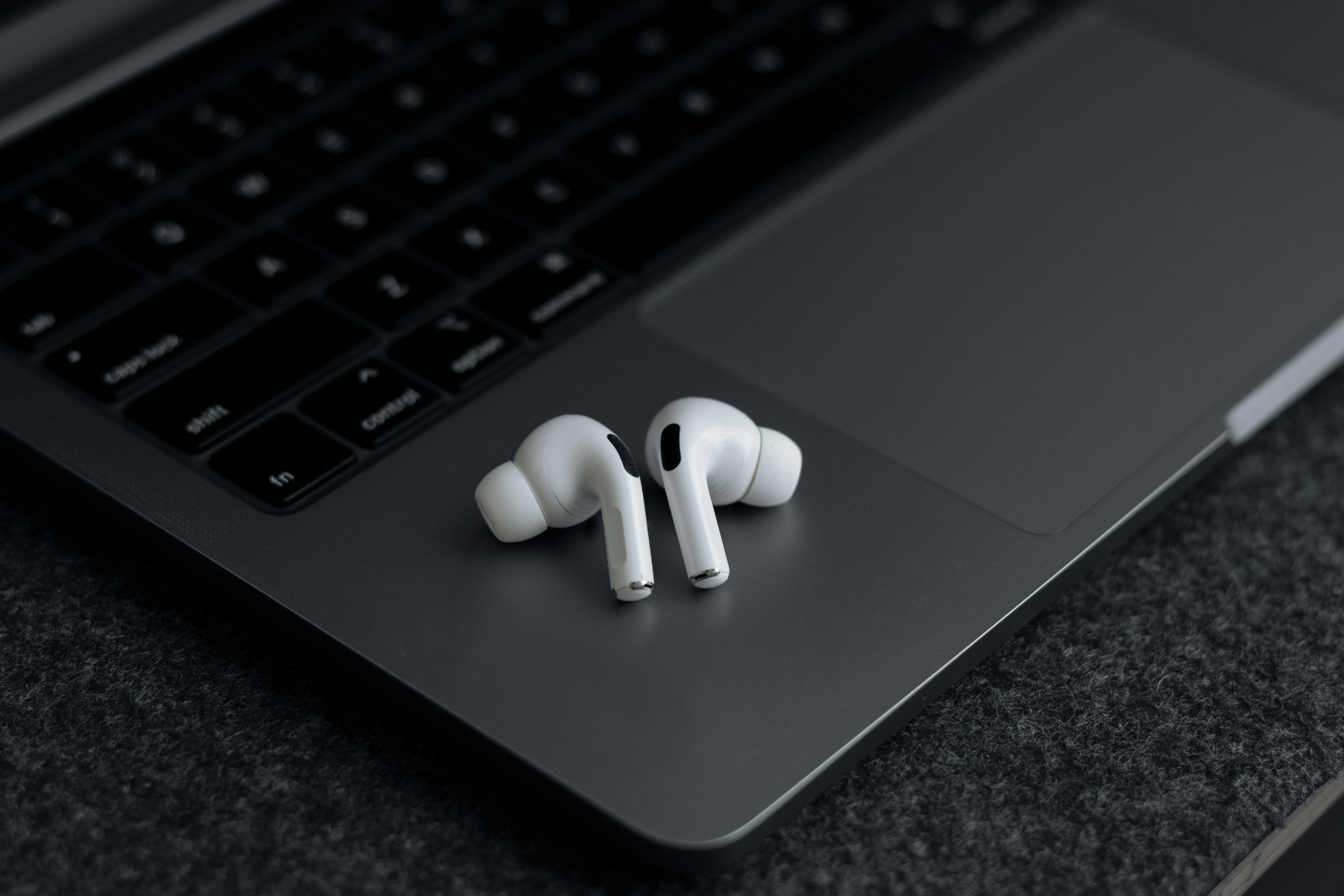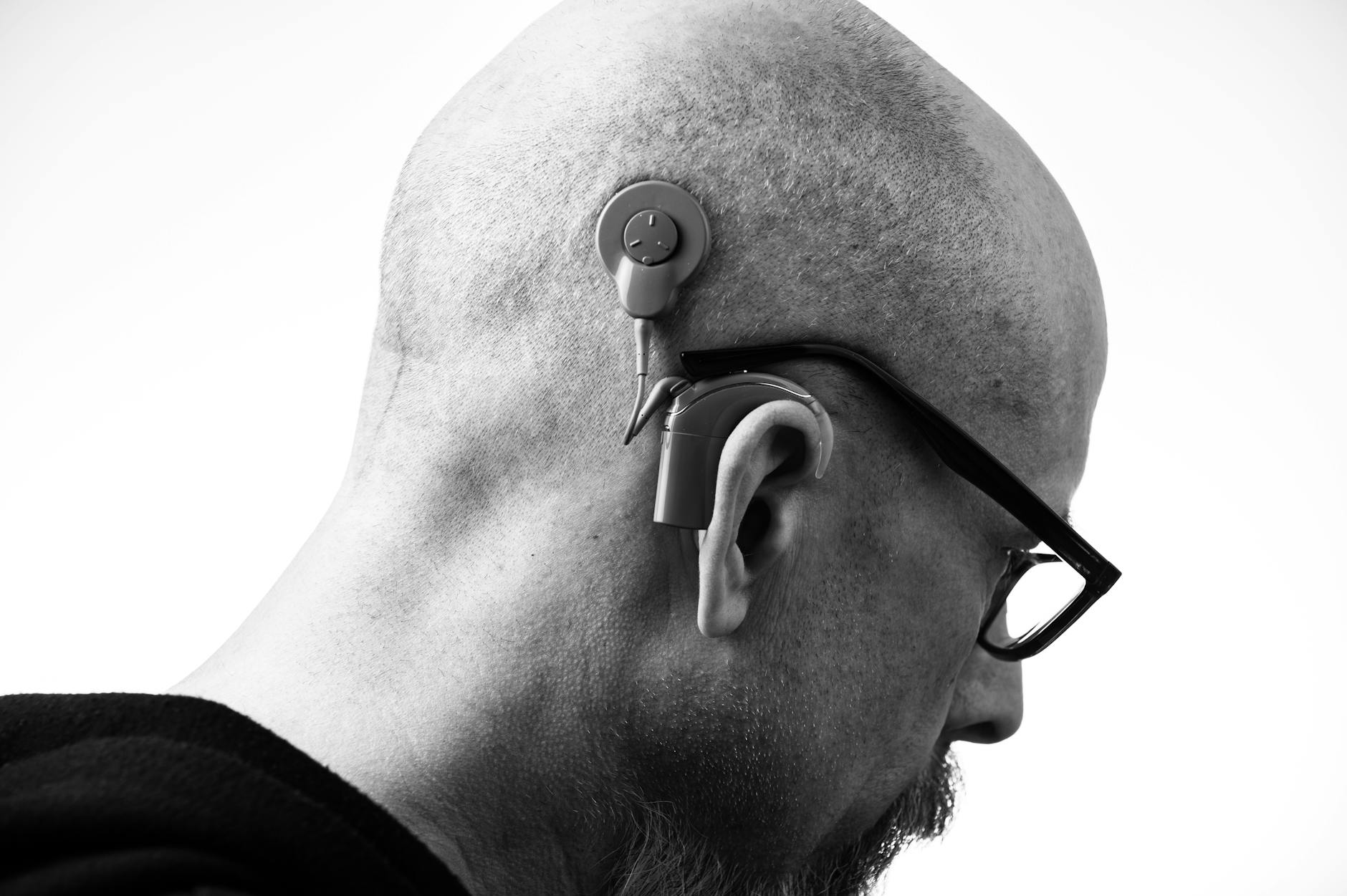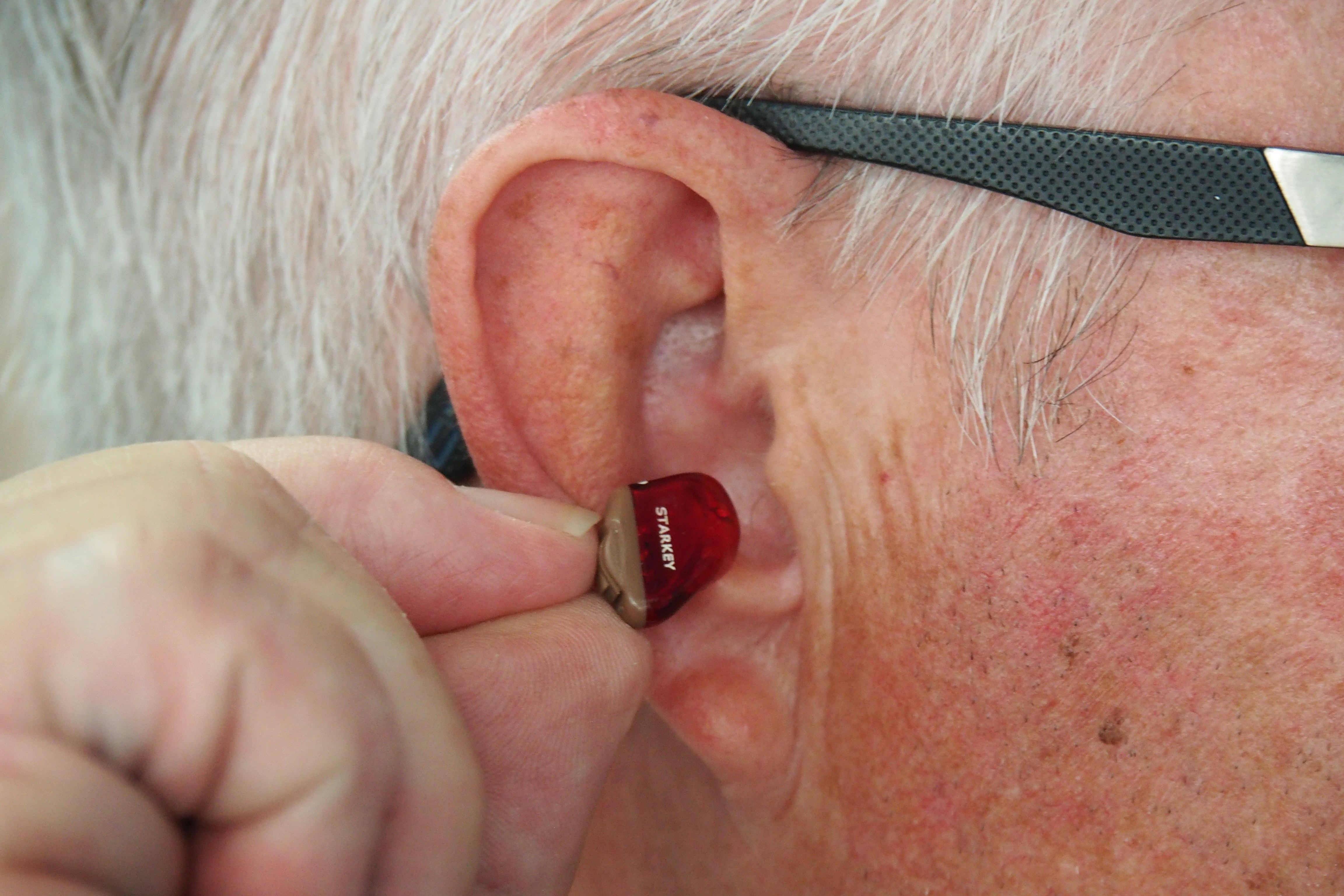If you’ve had a concussion and now the world sounds too loud, conversations blur together, or a constant ring won’t quit, you’re not imagining it. Mild traumatic brain injury (mTBI) can disrupt how your brain processes sound—even when a standard hearing test says your hearing is “normal.” This guide explains what’s happening, what the research suggests, and how to get practical, evidence-based help.
The short version
- Concussions can affect how the brain filters, focuses on, and interprets sound—especially in noisy places.
- Common post-concussion ear-related symptoms include tinnitus (ringing), sound sensitivity (hyperacusis), muffled or distorted speech-in-noise, and dizziness or imbalance.
- Standard hearing tests may be normal; specialized speech-in-noise and auditory processing measures often reveal the problem.
- Targeted rehab helps: a combination of audiology care, auditory training, communication strategies, remote microphones, and vestibular therapy when needed.
- If you develop sudden hearing loss, severe one-sided ringing, or spinning vertigo soon after a head injury, seek urgent medical care.
Why your ears struggle after a concussion
Your ears collect sound, but your brain makes sense of it. A concussion is a transient injury to the brain’s networks. Even without structural damage on imaging, mTBI can cause functional changes in the auditory pathways that connect the brainstem, midbrain, and cortex. Researchers often describe three themes:
- Attention and filtering overload: After mTBI, the brain’s ability to suppress irrelevant noise can be weakened, making crowded rooms feel overwhelming.
- Timing glitches: Subtle delays in how sound timing and rhythm are coded can blur consonants and rapid speech, especially in background noise.
- Binaural integration issues: The brain may struggle to combine inputs from both ears, which normally helps you locate sounds and “focus” on a voice in noise.
These central processing effects can occur alone or alongside peripheral issues (like eardrum or inner ear changes) from the injury itself. Some people also develop vestibular problems (dizziness, imbalance) because the inner ear’s balance organs share close connections with auditory pathways.
How common are hearing-related symptoms after concussion?
Rates vary by study and population, but increased reports of tinnitus, sound sensitivity, speech-in-noise difficulty, and dizziness are well-documented after mTBI. Veterans and athletes with concussion histories often describe these symptoms even with normal audiograms. The takeaway: post-concussion ear and listening issues are common—and real—even if the basic test is normal.
What post-concussion symptoms to watch for
- Ringing, buzzing, or hissing (tinnitus)
- Everyday sounds feel too loud or sharp (hyperacusis)
- Hearing fine in quiet but struggling in restaurants or meetings
- Difficulty following rapid speech, accents, or multiple talkers
- Trouble localizing where sounds are coming from
- Ear fullness or pressure
- Lightheadedness, imbalance, or motion sensitivity
- Listening fatigue: you can “hear” but it wears you out
If you notice sudden hearing loss, one-sided tinnitus, or new spinning vertigo right after a head injury, treat it like an urgent issue and contact an ENT or go to urgent care.
Why your audiogram can look normal
A standard hearing test checks the quietest tones you can detect in a silent booth. After concussion, the problem is often not detecting sound but processing it—especially in complex, noisy environments. That’s why we turn to additional measures that stress-test the auditory system the way real life does.
How audiologists evaluate hearing after a concussion
Expect a more comprehensive assessment than the quick “beep” test. Your audiologist may include:
- Pure-tone audiometry and tympanometry: Baseline hearing and middle ear function.
- Otoacoustic emissions (OAEs): A check on cochlear hair cell health, which can be normal even with central issues.
- Speech-in-noise tests: Tools like QuickSIN or HINT quantify how much background noise disrupts understanding.
- Temporal processing: Tests (e.g., gaps-in-noise) examine how well your brain tracks rapid changes in sound.
- Binaural and dichotic listening: Measures how both ears work together under competing signals.
- Vestibular screening: Basic balance checks; if abnormal, a referral for full vestibular evaluation.
- Questionnaires: Tinnitus impact, hyperacusis, listening effort, and dizziness scales to prioritize care.
Some clinics also use electrophysiology (like auditory brainstem response) to look for subtle timing changes, and may coordinate with neurology or neuropsychology for broader cognitive concerns.
What helps: Research-backed strategies that make a real difference
1) Optimize the listening environment
- Choose quieter venues and sit with your back to walls, facing speakers.
- Use soft furnishings or portable sound-dampening panels for home offices.
- Turn off competing noise sources (fans, TV, autoplay tabs) during calls.
2) Leverage technology
- Remote microphones: A clip-on or tabletop mic streaming to your ears can cut the distance and background noise that make speech hard to follow.
- Directional microphones and noise management: In hearing devices, these features can improve speech access in noise, even when hearing thresholds are normal.
- Transparency ear-level devices: For hyperacusis, careful use of low-gain or transparent modes can reduce strain without over-blocking sound.
- Live transcription: Real-time captioning on phones or laptops can bridge gaps in meetings and classes.
3) Auditory training and therapy
Like physical therapy for your ears and brain, structured listening exercises can improve speech-in-noise understanding and listening stamina over time.
- Clinician-guided programs: Target timing, dichotic listening, and auditory attention.
- Home-based training: Evidence-informed apps or computer programs. Consistency matters more than session length—aim for short, regular sessions.
- Mindful pacing: Build in listening breaks; avoid back-to-back noisy tasks early in recovery.
4) Tinnitus and sound sensitivity care
- Tinnitus management: Sound therapy, counseling-based approaches, and addressing stress/sleep often reduce distress.
- Hyperacusis care: Gradual sound enrichment with professional oversight can recalibrate tolerance. Avoid constant overprotection; use earplugs strategically in truly loud settings.
5) Vestibular rehabilitation
If dizziness or imbalance persists, vestibular physical therapy can retrain balance and reduce motion sensitivity. This often helps listening comfort too, because brain networks for balance and attention overlap.
6) Whole-person factors
- Sleep and headache management: Treating sleep disruption and post-traumatic headache frequently eases tinnitus and sound intolerance.
- Mental health support: Anxiety and PTSD can amplify sound intolerance and tinnitus distress. Cognitive-behavioral strategies are often beneficial.
- Gradual return: Step-wise exposure to challenging listening situations helps the brain adapt without overload.
Work with an audiologist to tailor this plan. What you need may shift over time, and that’s normal.
What to expect over time
Many people improve in the first weeks to months, especially with rest, pacing, and targeted rehab. If symptoms linger beyond a few months or interfere with work, school, or relationships, it’s worth a comprehensive audiology evaluation and coordination with your care team (primary care, neurology, ENT, and vestibular therapy as needed).
Practical communication strategies that reduce day-to-day strain
- Prefer one-on-one conversations and small groups; ask to switch to a quieter spot when possible.
- Preview key information (agendas, notes) before meetings to reduce cognitive load.
- Ask speakers to face you and slow down slightly; repeat back key details to confirm.
- Use captioning for videos and virtual calls; record meetings when allowed.
- Set “listening limits”: cap your time in noisy environments and plan recovery breaks.
When to seek help—today
- Urgent: Sudden hearing loss, new one-sided tinnitus, or spinning vertigo after head injury.
- Soon: Ongoing tinnitus, sound sensitivity, speech-in-noise problems, or dizziness lasting more than a couple of weeks.
An audiologist can run the right tests and coordinate care with neurology and ENT as needed. If you’re unsure where to start, a hearing clinic or ENT practice with experience in concussion and vestibular care is a solid first step.
Research frontiers to watch
- Objective markers: Advanced brainstem and cortical responses that might track post-concussion auditory timing.
- Personalized training: Matching auditory exercises to the specific processing deficit (timing vs. binaural vs. attention).
- Device algorithms: Smarter noise reduction and beamforming aimed at reducing listening effort without losing speech detail.
The bottom line
After a concussion, it’s common to hear “fine” in quiet but struggle in the real world. That’s a brain-based listening problem—and there’s real help available. With the right evaluation and a tailored mix of technology, training, and pacing, most people regain comfort and confidence in how they hear. If your ears or balance haven’t felt right since a head injury, book an appointment with an audiologist to get a plan you can trust.
Frequently Asked Questions
Can a concussion cause hearing loss even if my hearing test is normal?
Yes. A concussion can disrupt how your brain processes sound—especially in background noise—without changing your basic hearing thresholds. This can cause tinnitus, sound sensitivity, and trouble understanding speech in noisy places. Specialized tests and rehabilitation can help.
How long do post-concussion hearing symptoms last?
Many people improve over weeks to months, particularly with rest, pacing, and targeted care. If symptoms persist beyond a few months or affect daily life, schedule a comprehensive audiology evaluation and ask about auditory training, remote microphones, and vestibular therapy if dizziness is present.
Will I need hearing aids?
Not everyone does. Some benefit from low-gain amplification, advanced noise management, or remote microphones even with normal thresholds. The best choice depends on your test results and goals. An audiologist can trial options and measure benefit in realistic listening conditions.
Is it safe to use earplugs if sounds feel painfully loud?
Use hearing protection in genuinely loud settings (concerts, tools), but avoid constant overprotection, which can worsen sound sensitivity over time. Gradual sound enrichment, guided by a clinician, usually helps rebuild tolerance more effectively.
References
- CDC: Traumatic Brain Injury & Concussion
- Mayo Clinic: Concussion
- NIDCD (NIH): Central Auditory Processing Disorder
- NIDCD (NIH): Tinnitus
- NIDCD (NIH): Balance Disorders



